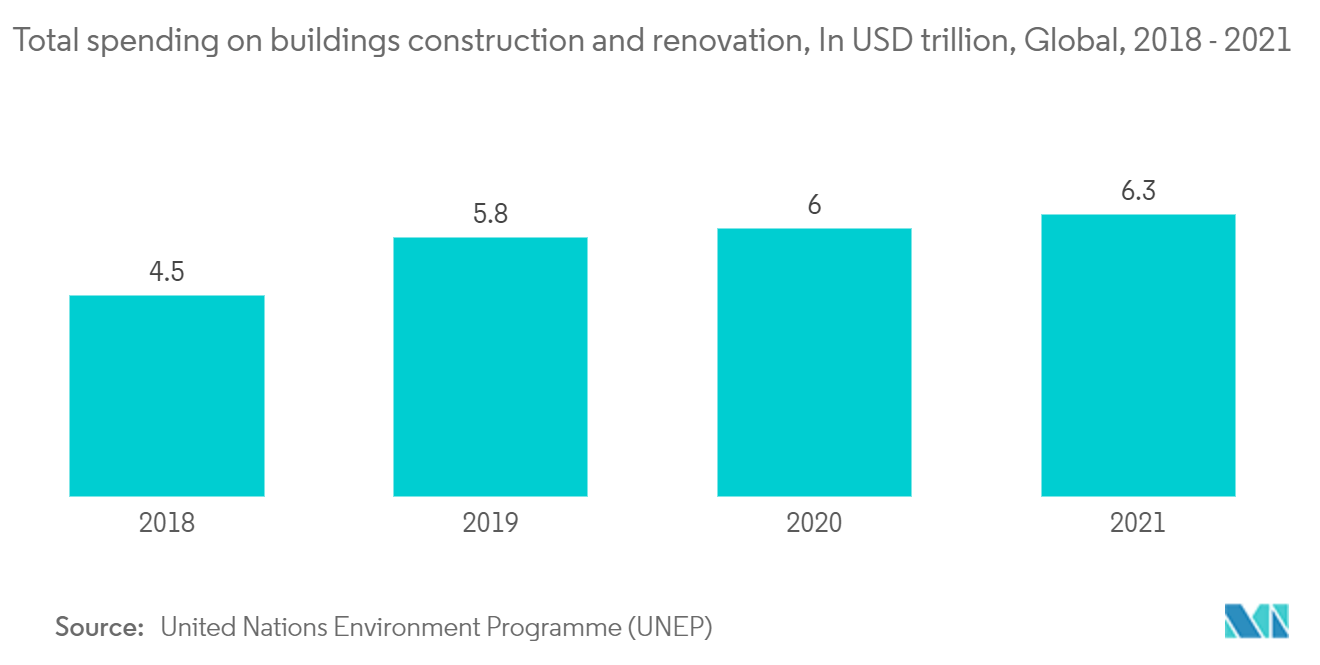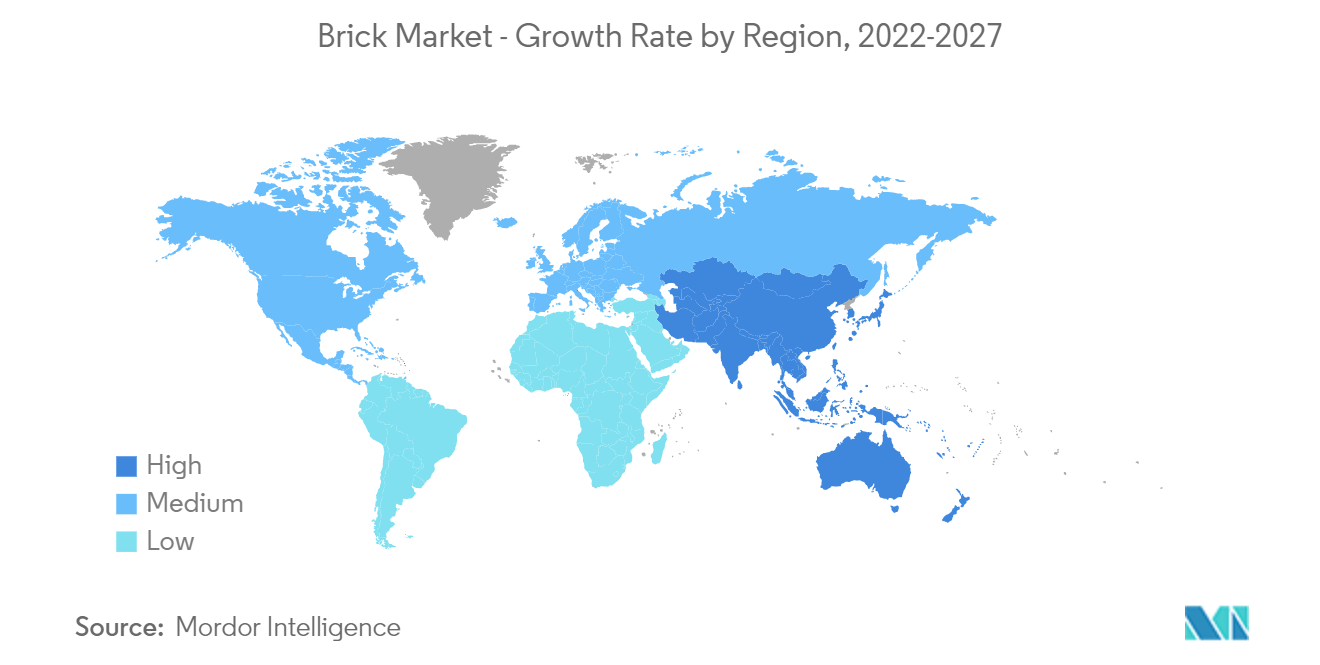Market Trends of Brick Industry
Growing Demand from the Building Segment
- The global brick market is driven by rising urbanization, growing demand for residential and non-residential buildings, and construction activities to improve and develop the existing infrastructure.
- Brick is among the primary building materials used to construct all residential, commercial, and industrial buildings. Hence, growth trends in the construction industry and renovation of facilities worldwide favor the demand for bricks.
- The IEA estimates that the global building construction sector will be valued at more than USD 6.3 trillion in 2021, registering an increase of around 5% compared to 2020.
- Furthermore, According to the Institution of Civil Engineers, China, India, and the United States are expected to account for almost 60 percent of all global growth in the sector by 2025.
- As per U.S. International Trade Administration, China is the world's largest construction market and is forecasted to grow at an annual average of 8.6% between 2022 and 2030.
- The United States was among the top construction markets globally, and per the United States Census Bureau, in 2021, the construction put in place in 2021 in the United States was valued at USD 1.589 trillion, accounting for around 4.3% of the total GDP of the country.
- In European Region, as per the European Commission, By 2030, Europe's Renovation Wave aims at least to double the annual energy renovation rate of buildings and focus on a goal of renovating more than 35 million buildings, i.e., 13% of the total establishments in the region.
- Thus, the factors above are expected to drive the building segment of the brick market during the forecast period.

Asia-Pacific to Dominate Brick Market Studied
- Globally, Asia-Pacific holds a prominent share of the brick market, and it is expected to dominate the market studied, during the forecast period.
- Asia-pacific has seen rapid urbanization in the last few years, as developing countries, like China, India, Japan, and Indonesia, from the region are becoming a global hub for the construction industry across the world.
- Asia-Pacific dominates the construction industry, of which buildings are the major segments across the world, contributing about 46% of the global spending in the construction sector.
- China is in the midst of a construction mega-boom. The country has the largest building market in the world, making up 20% of all construction investments globally. The country alone is expected to spend nearly USD 13 trillion on buildings by 2030.
- As per Invest India and IBEF, the construction Industry in India is expected to become the 3rd largest construction market globally and to reach USD 1.4 trillion by 2025. Moreover, Real Estate Industry in India is expected to reach USD 1 trillion by 2030 and will contrib to around of% to India's GDP.
- According to the Ministry of Finance of Japan, the construction industry in Japan generated sales of approximately JPY 136.7 trillion (~USD 1.22 trillion) in the fiscal year 2021 registering an increase of 2.1 % as compared to the FY 2020.
- In Indonesia, as per Statistics Indonesia (BPS) in the year 2021, the GDP of the construction sector in Indonesia was IDR 1,771.73 trillion (~USD 0.177 trillion). Furthermore, as per the World cement, the Indonesian construction market is expected to record a growth of 7.2% in real terms in 2022.
- Thus, the growing trends in the construction industries in the different countries of the Asia-Pacific region are expected to drive the market studied in the region, during the forecast period.


